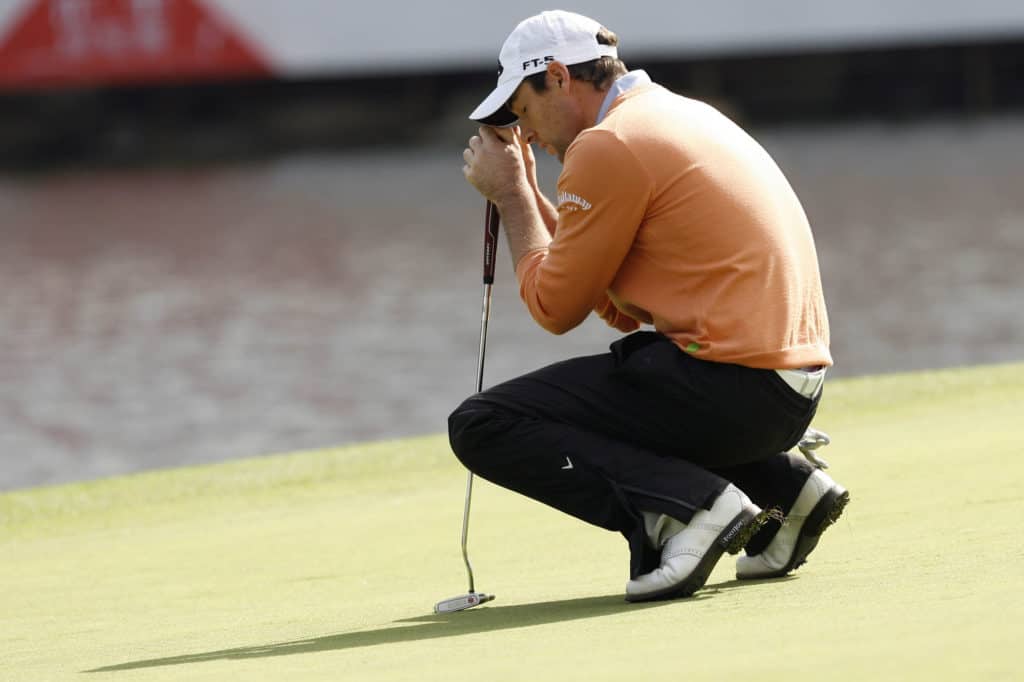
It is quite common for golfers to be nervous or make mistakes when they are on the first hole of a golf tournament.
There are several reasons this can happen.
Golf is a difficult game, and the first hole puts quite a bit of pressure on people.
Here are some of the reasons golfers struggle on the first hole.
Why Do Golfers Struggle on the First Hole?
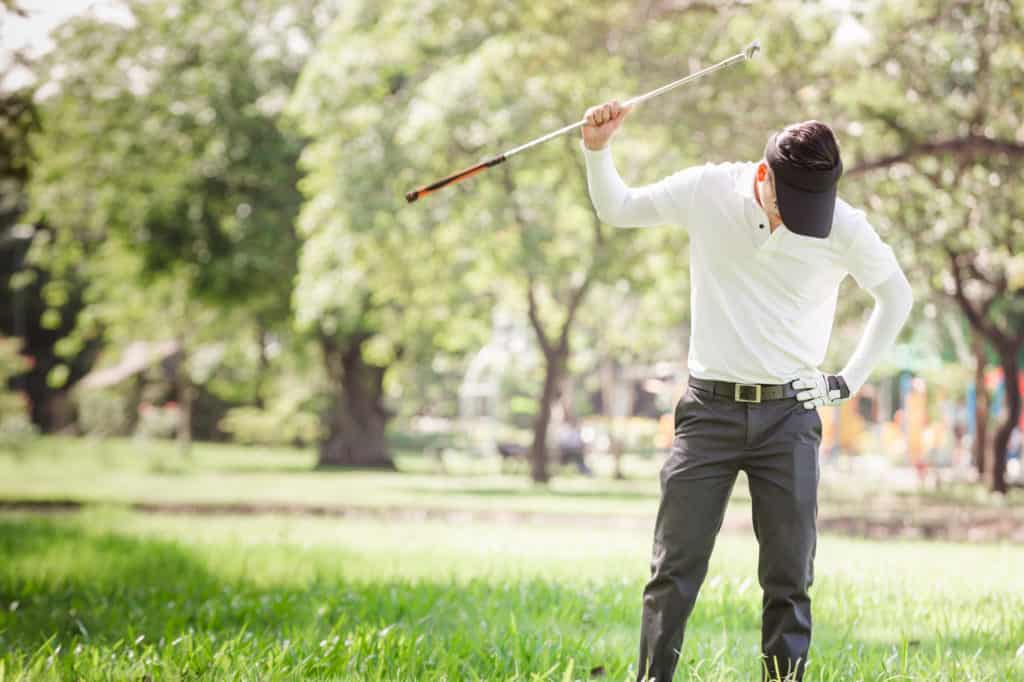
Golfers struggle on the first hole of a golf course because of the mental pressure that is put on them.
Golf is a challenging game to begin with, and then golfers get the idea in their mind that they must perform perfectly on the first hole.
All of the practice they have been putting in and the thinking about their game does not need to be applied on that first tee.
When golfers learn this, they can start to have a much better starting hole.
Picking a simple swing thought and taking a smooth and controlled golf swing will help golfers learn to handle themselves on the first hole.
There are lots of things you can do to get over the first tee jitters.
How Can I Get Over the First Tee Jitters?

Here are a few things to do to help you get over the first tee jitters.
1. Warm Up Before You Play

Sometimes golfers will run right to the first tee and not take the time to warm up.
This is not a great idea and could lead to some issues off the first tee.
Your muscles will be stiff and could cause you to hit a bad shot or get hurt.
Every golfer knows that your swing is going to change from time to time.
From one day to the next, your tempo can speed up or slow down.
Your swing can start heading back on the wrong path, or you may start a slice out of nowhere.
Hitting a few balls at the range before you play lets you know what you are up against that day.
When you stand on the first tee, it’s essential to have at least done some stretching and hit a few golf balls.
Giving yourself some time to swing, it helps to make sure your body is warmed up as well as your mind.
When you get that nervous feeling on the first tee, you can remind yourself that you just hit some great shots at the swing.
The power of a great mental thought should not be underestimated.
2. Pick a Specific Target and Focus on It

Golfers tend to allow too many thoughts to get in their heads on the first tee.
The less you can think about on the first tee, the easier it will be on you.
The best swing thought on the first tee is to pick a target and work on hitting to that exact spot.
Choose something more specific than the center of the fairway.
Try and pick an exact spot.
Make sure you are lined up to the spot, and while you are swinging, think about finishing and facing that spot on your follow through.
This will help clear your mind of some of the other thoughts which may be circling when you stand on that first tee box.
3. Stay in Balance
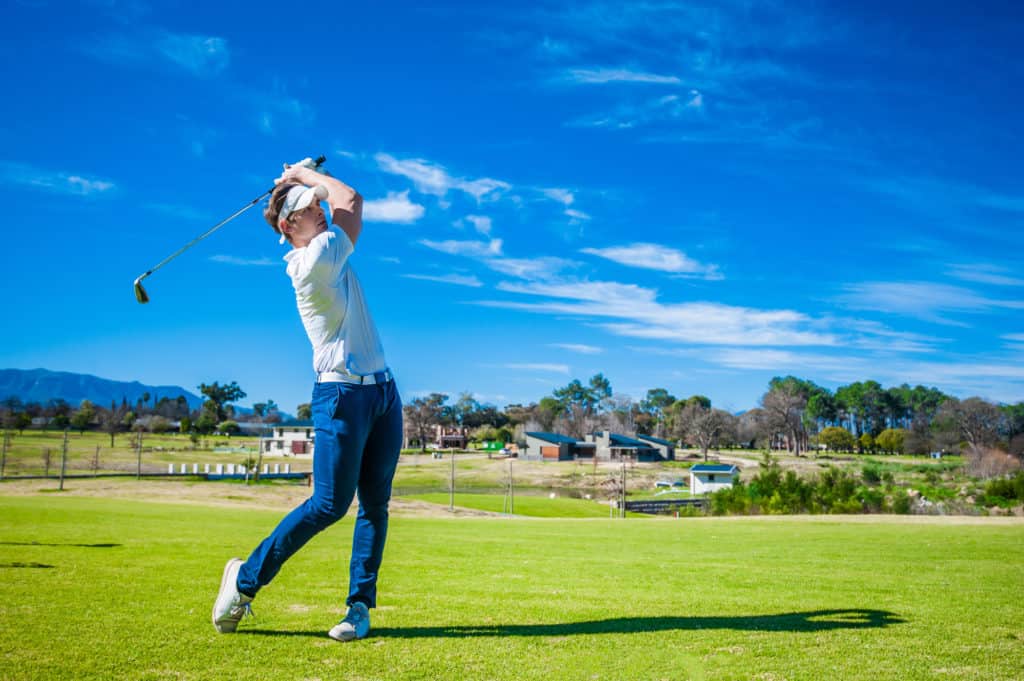
Have you heard of the phrase “swinging out of your shoes?”
Golfers tend to swing too hard on the first tee.
They take the pressure that is on them and end up channeling it into their swing speed.
This can be a problem and cause players to get out of balance.
Swings that are out of balance usually result in poor shots, and this is a very common reason some golfers slice the ball as well.
Convince yourself that you can swing with as much speed as you want as long as you stay balanced.
This is a great way to keep your swing at a more consistent tempo if you focus on balance.
Tips for Calming Your Nerves on the Golf Course
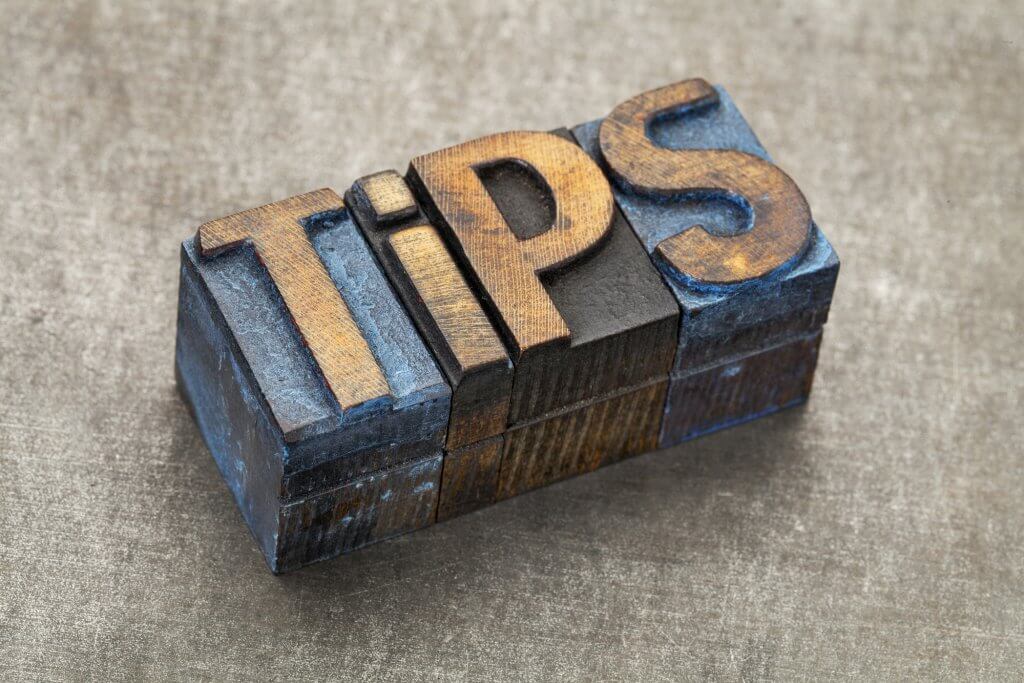
Sometimes your jitters may not be limited to the first tee box.
If you find yourself struggling to calm down throughout your round, there are some things you can do to help.
Some people only struggle with nerves when they are playing in a competition, but others will feel it during any round of golf.
Here are a few ideas for helping you to feel calmer when you are on the course.
1. Breathing

We cannot express how important it is to practice breathing when your nerves start to act up on the golf course.
People forget to breathe when things get tough.
When your breaths get shorter and you start breathing faster, your body can’t function in the same way it could when your breathing is relaxed.
You should practice some breathing exercises before, during, and after your round.
You will be amazed at what a difference a breath can make when it is done properly before a swing.
Some golfers realize that once they get a good breathing routine down, they are able to get more distance and accuracy as well.
Breathing is a great thing to practice, not just when you are playing golf but also in life.
When you start to feel stressed out, a good breathing exercise can make a big difference.
2. Visualization
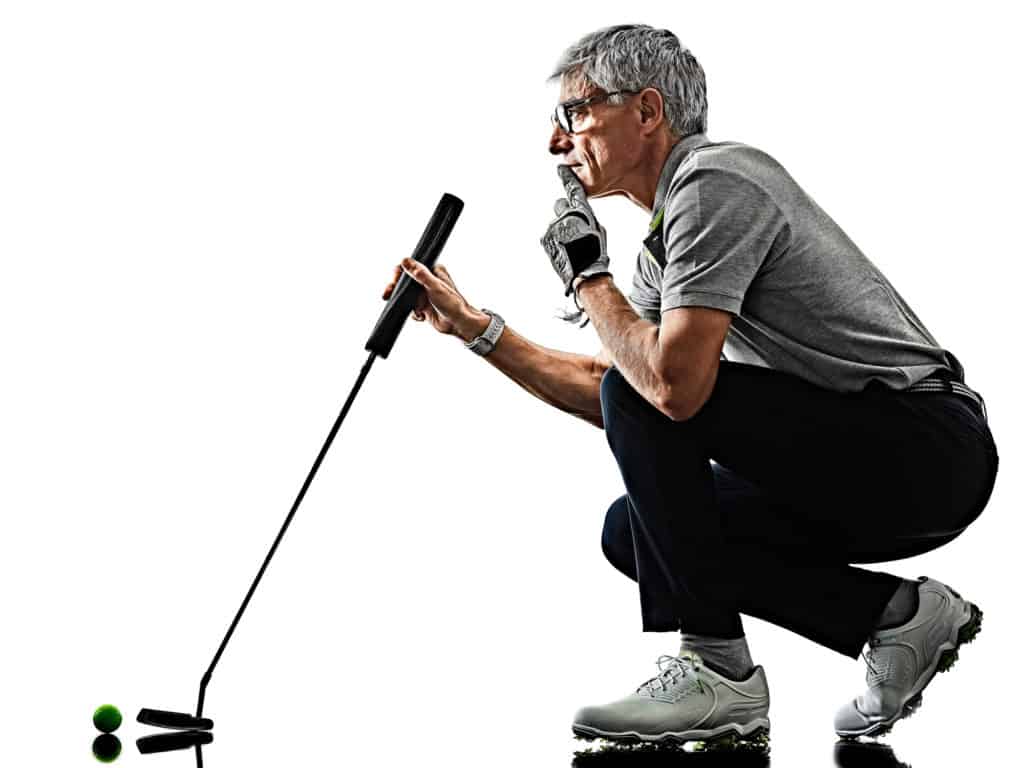
Part of the reason golfers get nervous is they visualize all the bad things that can happen with their shot.
If there are hazards or sand traps, golfers will think about hitting it into these bad areas.
When you can learn how to visualize success, there will be significant impacts on your game.
Thinking about the ideal golf shot, where it would land, how it rolls, and where it will finish is very important.
The power of visualization is strong in golf, but you must practice this concept.
You have to practice visualizing shots when practicing, and then you will eventually learn how to do it.
Obviously, you will want to visualize a shot you will actually be able to hit.
If you are standing 250 yards from the hole and you visualize the ball going in, this is probably not going to happen.
However, if you are 100 yards from the hole and you picture yourself swinging in balance, the ball landing on the green, and then rolling near the hole, this is a great visualization.
There are many golf books out there that will teach you how to visualize your golf shots properly.
3. Mentally Prepare

Mental preparation is a great way to help calm your nerves on the golf course.
If you are nervous, it is not necessarily a bad thing.
The nerves mean that you care.
Knowing how to channel those nerves and eventually help yourself to use them to perform is what separates the great golfers from the good golfers.
Some ways to improve your mental game include practicing more intentionally, seeing a golf sports coach, or reading some golf books about the mental side of the game.
Any of these things will help you start to contemplate the proper strategies to succeed.
There are also some golf related podcasts you could listen to.
If you put those on in your car on the way to work, they may make all the difference during your next round of golf.
4. Towel in Hands

When golfers get this nervous energy, sometimes they need to get it out in some way.
For a golfer who is walking the golf course, holding a towel in your hands while you walk can really help.
As the player walks, they can get some of the nervous energy out by squeezing the towel and walking and thinking.
If your hands need someplace to be, the towel is a great way to get this energy out.
Do Golf Professionals Get Nervous?

Golf professionals probably get more nervous than amateurs.
Part of the reason behind this is that golf professionals have much more on the line than the amateur golfer.
Golf professionals could be playing for career improvements or money to feed their families.
Certainly, there is quite a bit more on the line for the professional than the amateur.
If you want to start to feel a bit more pressure and see how your game would perform under pressure, you can start a little golf course betting.
Even if you play against your friend for a dollar or an after-round drink, at least you are testing your game under pressure.
Although you may think this could go against calming your nerves, it will actually start to help you learn how to control them.
Like anything else in golf, learning how to compete under pressure is important.
Making sure you have those opportunities to practice the concept will help you improve.
Should I Stay Away from the Driver on the First Tee?

Some people think that, because of their nerves on the first tee, it is best to hit a different club.
For beginner golfers, this may make sense.
You can use a hybrid or even an iron off the first tee box to get a positive result and then keep moving forward.
Eventually, you will want to learn how to perform off the first tee box regardless of the golf club you have in your hand.
This is a good temporary fix, but you will probably have a longer shot into the green and could risk making a bogey.
You don’t want to let your nerves or insecurities on the golf course start to make you lose confidence or strokes in your game.
What Club Should I Use Off the First Tee?

We believe in practice and hard work.
The more time you put into the game, the better you are going to get.
You should be using your driver off the first tee even if it is a club you don’t have the most confidence in.
Learning to hit this driver well and experimenting with it until you feel comfortable doing so is the best thing for your game.
You will likely hit a few bad shots and have a few double-bogey starts, but it is this learning process that will eventually help you succeed.
What Is a Mulligan?

Since struggling off the first tee is quite common, many golfers give themselves a mulligan.
A mulligan is an extra shot you get off the first tee.
The thing is, a mulligan is not in the rules of golf, so this is really not legal according to the USGA.
If you are playing a friendly round and not recording scores, mulligans are acceptable and something you will see quite often.
Again, it’s best to learn how to hit these shots off the tee and not rely on the mulligan.
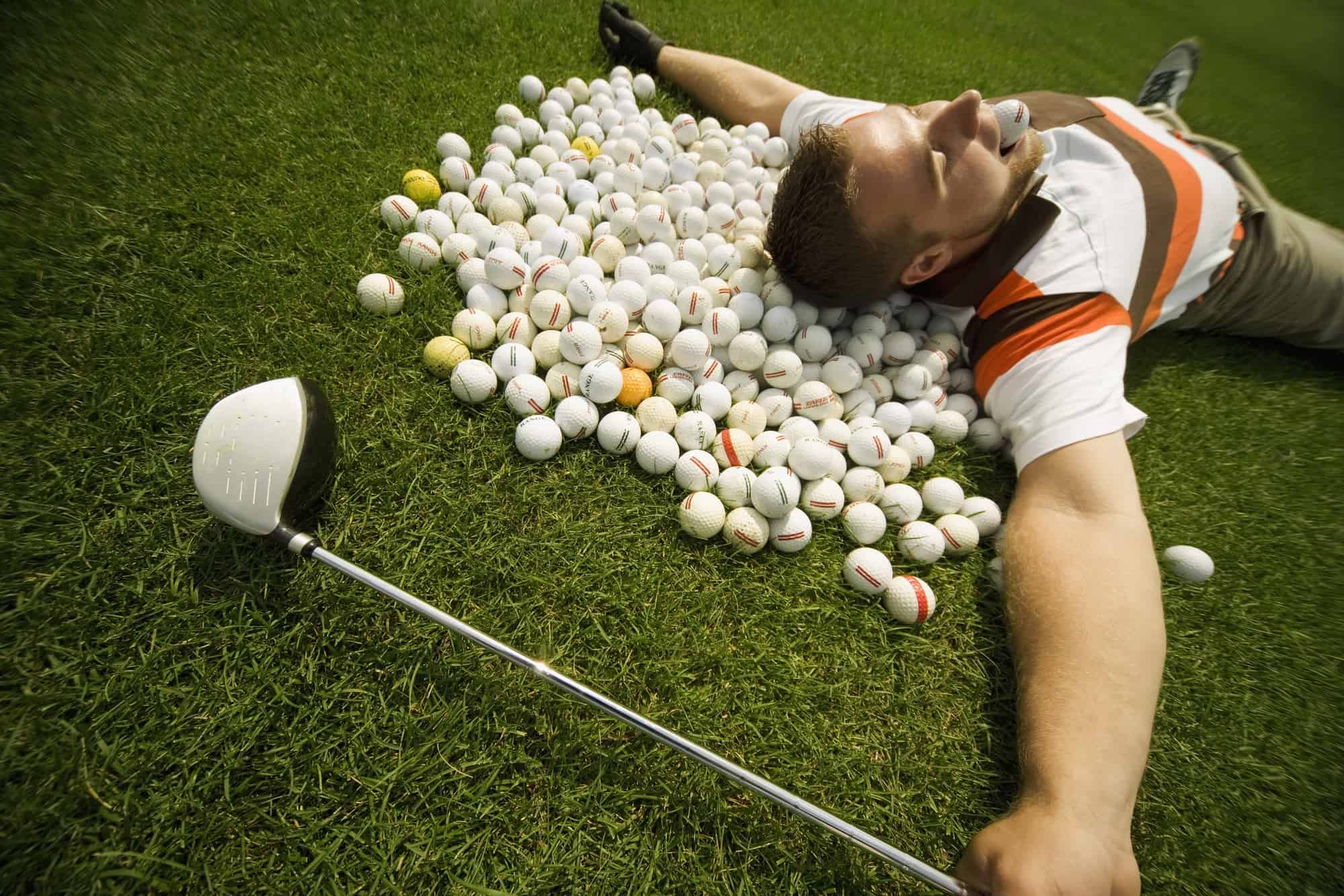
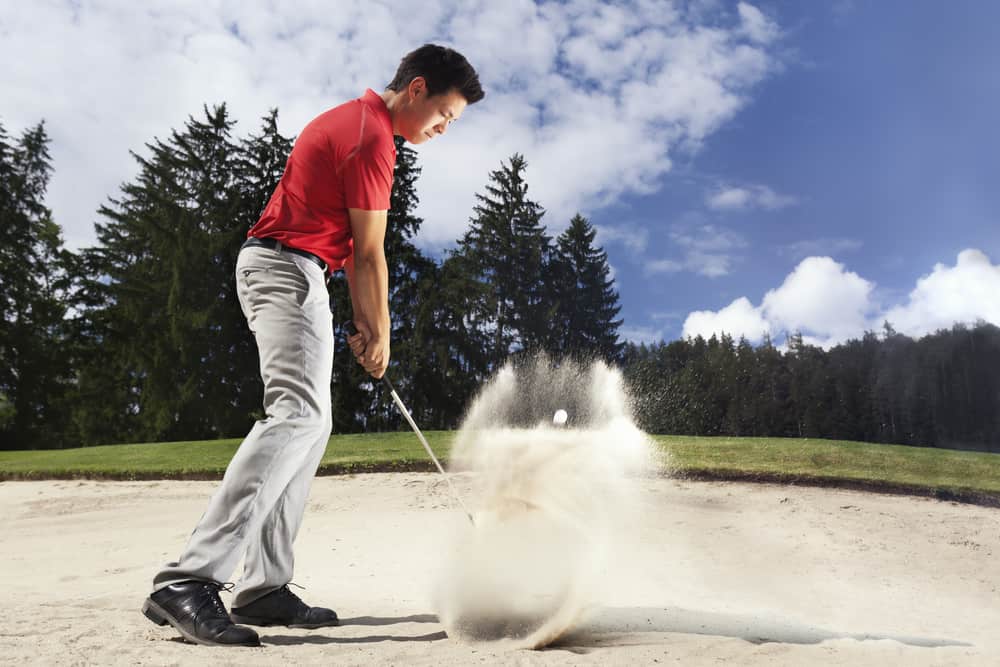

Leave a Reply